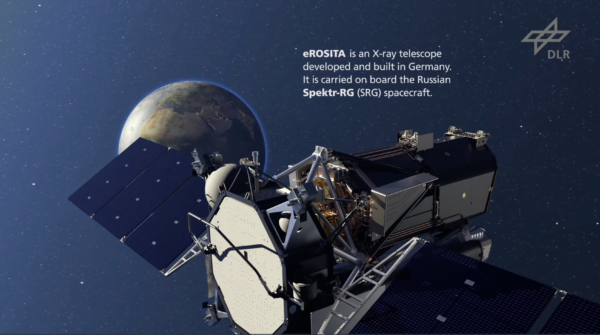Astronomers have announced the discovery of an “interstellar tunnel” in the vicinity of our solar system, which may lead to other star systems.
According to a new study published on October 29 in the journal “Astronomy & Astrophysics,” this tunnel is part of a massive high-temperature gas structure around our solar system known as the “Local Hot Bubble,” with a radius spanning hundreds of light-years. More significantly, the research results suggest it may be connected to a neighboring and larger bubble.
Researchers utilized a wealth of data collected by the first X-ray astronomical telescope outside Earth’s atmosphere, the “eROSITA,” to generate a 3D model of the entire “Local Hot Bubble.” This confirmed some predicted features by astronomers while also revealing new characteristics.
Michael Freyberg, an astronomer at the Max Planck Institute for Extraterrestrial Physics in Germany and a co-author of the study, stated in a release, “What we didn’t know is the existence of an interstellar tunnel leading to the constellation of Centaurus, which carves out a passage in the colder interstellar medium. This area stands out prominently due to the significantly enhanced sensitivity of eROSITA and the distinctly different survey strategy compared to its predecessor ROSAT.”
The presence of the Local Hot Bubble, or simply the Local Bubble, was first proposed over fifty years ago to explain the widespread background X-ray radiation. As the space between star systems is filled with sparse gas and dust clouds known as the interstellar medium – which eventually collect to form stars – this low-energy X-ray radiation is typically absorbed before it can be detected.
But what if our cosmic corner is empty for some reason? That would be the Local Bubble. Astronomers believe it was formed around 14 million years ago when a series of supernovae blew away all nearby interstellar material, creating a cavity approximately 1,000 light-years in diameter. Today, we can see the remnants of these supernovae as evidence.
This idea faced challenges: decades ago, researchers found that interactions between our Sun’s solar wind and the outer atmosphere of our planet could also produce similar X-ray radiation. However, in recent years, with the observation of young star clusters forming at the edge of this bubble, this concept has gained further support.
The researchers suggest that this interstellar tunnel may be part of a network spanning the entire interstellar medium of the Milky Way, formed by energy explosions released by stars.
In addition to the interstellar tunnel, detailed modeling of the Local Bubble reveals temperature gradients within the structure, with the northern region significantly warmer than the southern region.
This indicates that more recent supernovae may have expanded this bubble and reheated its contents, perhaps within the past several million years.

